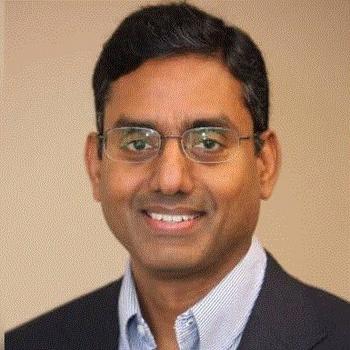With stock trading apps like Robinhood, Webull, Charles Schwab, and countless others gaining massive popularity over the past few years, especially since COVID, Ashok Margam, a finance term assistant professor at the Costello College of Business at George Mason University, saw an opportunity.

He saw how people were hungry to learn about trading, also evidenced by the millions of views from trading videos online. But the viewer cannot always know who is creating those videos or how credible and successful they are. Dr. Margam has a passion for the subject and the experience of 25 years of successful trading to guide students on how to understand trading and find their own successes. “I think we as an institution have an obligation to cater to the real-world interests of students and their learning experience,” he says. Last year, he proposed his plan for the course to Alexander Philipov, chair of the finance area, and it was quickly put into action. Finance 491: Introduction to Modern Trading completed its third offering in spring of 2024, with greater attendance numbers each time it’s offered.
Following a decade of software engineering, Margam spent the next ten plus years working in financial markets, algorithmic trading, and institutional risk management. He’s worked in start-ups and corporate environments in Silicon Valley and Wall Street. As someone with work experience and expertise in the field, he also knew that he had a passion to teach and impact the next generation of business minds. “Most of my classes I try to teach evening schedules, so that until 4, I’m on the market,” he says. “When I’m teaching them that day in class, it’s from something that happened an hour ago and not from some textbook.” Because this course has a hands-on approach, rather than requiring his students to purchase textbooks, he instructs them to open accounts at one of the popular online brokerage firms (currently ThinkOrSwim) to track strategies, forecasts, and trading plans.
Margam’s goal for the class is to make modern trading as simple as possible and to teach his students tools that anybody can access on their computer or phone, something that sets modern trading apart from any other kind of trading. In his course syllabus, he defines modern trading in three concepts. First, it is employing diverse analytical tools provided by technologically advanced trading platforms of today’s brokerage firms. Second, it’s leveraging the quantitative, objective metrics and analytics to make trading decisions. And third, it’s analyzing data and developing evidenced-based, high-probability trading plans. Through these tools and analyses, Margam shows his students how vastly different from gambling that modern trading actually is. As long as his students make the trades, they get the homework grades. But what’s the incentive? “It’s unlike any other course because they are hungry to learn,” he says. “Every month, I announce the top trader, and that person gets an extra credit bonus of 1% toward their final grade.”
“I really give a huge credit to George Mason and Finance Area Chair Alex Philipov,” he says. “In any other university, introducing a new course takes years. It’s not easy, but Alex was able to implement it immediately because it’s our culture. The administration understands the utility of experiential learning.” At the Costello College of Business, not only do faculty members get to teach what they are passionate and knowledgeable about but they also teach what their students want to learn about.
